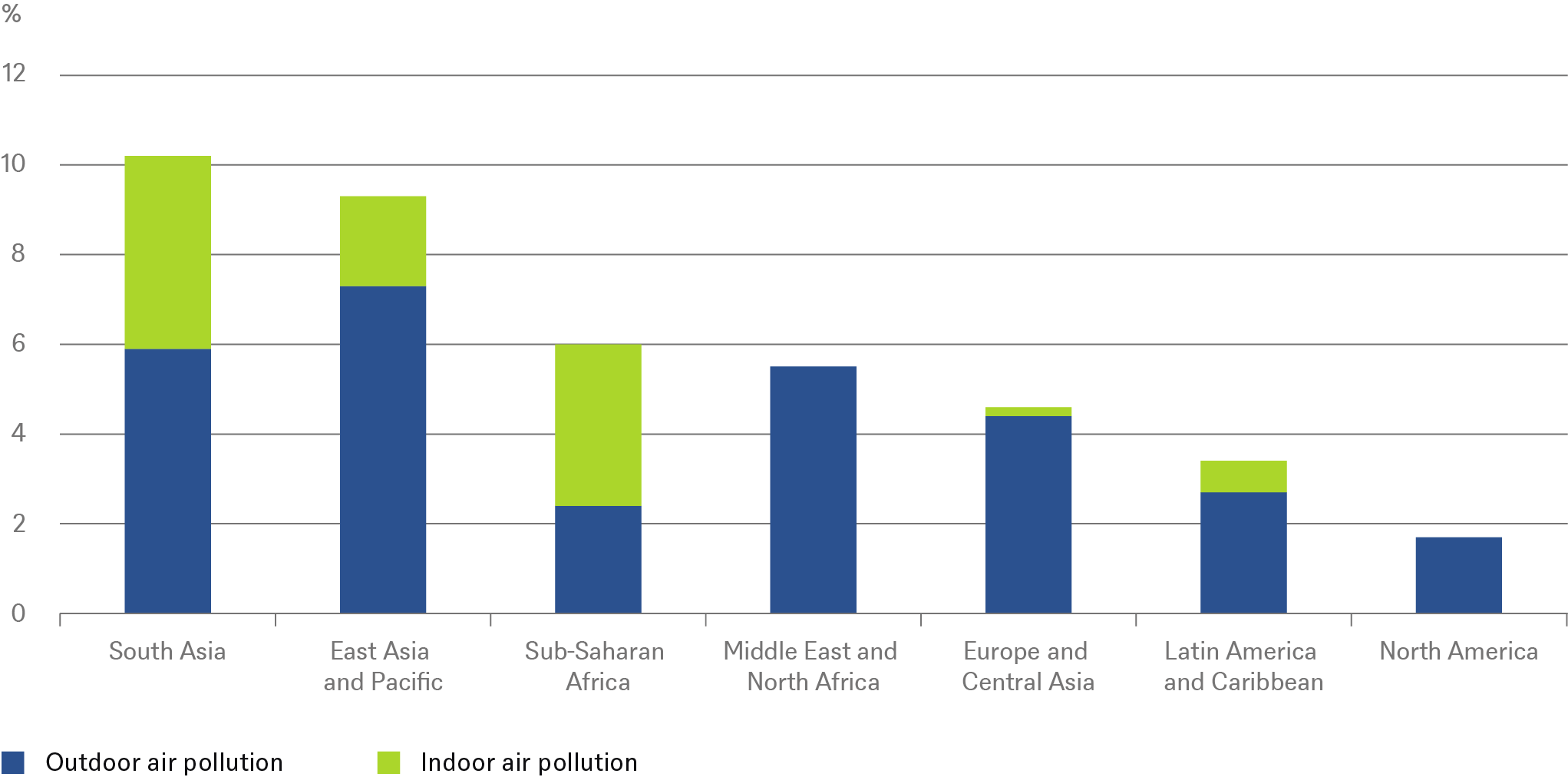- Home »
- Insights »
- CIO View »
- Chart of the Week »
- Fires show the limits of climate adaptation
When New York City’s skyline resembles scenes from a Hollywood disaster movie, it brings home to everyone what climate change feels, looks, and smells like.
Forest fire smoke from Canada gave millions of Americans the planet’s worst toxic air quality in early June. Our Chart of the Week shows that in recent years, about 6.1% of global GDP potential a year has been lost due to premature death and illness from air pollution.[1] Developing countries, especially in South Asia and the Asia Pacific regions, have already been hit particularly hard. But the recent forest fires in North America show just how tricky such backward looking air pollution cost estimates can be when drawing conclusions about the future in the age of climate change. After all, according to the old estimates, North America was the least affected region, as our chart shows.
Estimates on the costs of health damages due to air pollution only tell part of an even bigger story

* GDP impacted from PM2.5 air pollution (2019 Purchasing Power Parity)
Sources: World Bank (January 2022); Global Health Cost of PM2.5 Air Pollution: A Case for Action Beyond 2021 as of 6/13/23
Tiny particulate matter (also known as PM2.5) causes numerous diseases and millions of premature deaths globally including 48,000 people in the U.S. Wildfire smoke has undone the benefit of reduced vehicle and factory air pollution as the number of Americans affected by at least one very smokey day is 27x higher than 10 years ago. Higher income and Hispanic populations are increasingly affected. [2] Experts warned in 2022 that the U.S. wasn’t ready for the next wildfire smoke wave.[3] Billions of people breathe unhealthy air.[4]
By 2030, climate change could mean 14% more extreme wildfires.[5] Humanity cannot fully adapt to climate impacts as staying indoors does not fully protect people.[6] This points to the limitations of current estimates of air pollution cost. Typically, such estimates do not recognize that wildfire smoke is more toxic[7] or wildfire’s growing frequency and intensity. Also, lost labor market earnings likely exceed mortality and illness impacts.[8] Wildfire smoke risks increases preterm birth risk, hurts children’s health, their ability to learn and their future earnings.[9]
The U.S. government draft Social Cost of Carbon[10]in 2030 is US$140-380/ton CO2 but this does not yet include many climate impacts. This higher cost will guide policy decisions and indicates how regulations could strengthen for companies to internalize the damage caused by their use of fossil fuels. We are also starting to see insurance companies and re-insurance companies withdrawing coverage for some risks, such as flooding or indeed firers altogether[11] Plainly, there are likely to be plenty of economic costs that current estimates on the impact of air pollution do not fully capture. All the more reason for individuals and institutions to act to limit climate change with greater urgency.



